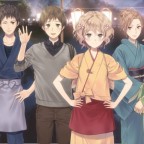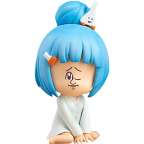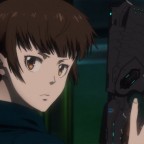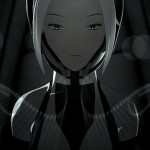Five Unlicensed Anime You Shouldn’t Miss
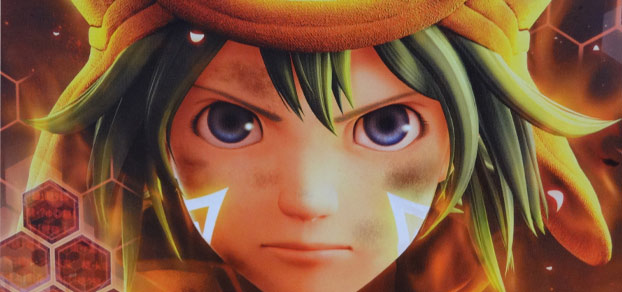
Each year tens of anime series air on Japanese television. Most of the good ones (and some of the bad) get licensed in the U.S. and find their way into our homes. But what about the great anime of the aughts that for some reason or another never got licensed? Here are five unlicensed anime series you shouldn’t miss.
Yakitate Japan
We start off with arguably the most addictive foodies anime out there. Yakitate Japan tells the story of Azuma Kazuma – a farm boy who just loves bread and everything related to it. His dream is to create “Ja-pan” – a bread that will represent Japan worldwide and become a national food. So he leaves his farm and goes to Tokyo in order to start working at a leading bakery called Pantasia. But to become a Pantasia employee he must win in the Pantasia entrance exam. Luckily for him he has “Solar Hands” that have a temperature higher than those of normal people. As a result he can ferment dough faster, giving him a small yet novel edge. What follows is a series of ever-increasing challenges as Azuma confronts the brightest pastry chefs in Japan and, eventually, the whole world.
Yakitate Japan is hard to describe but a pleasure to watch. This series is essentially about bread-making, but is almost entirely made up of captivating cooking tournaments. This is where the series shine. These tournaments serve as the training grounds for Azuma as he gradually becomes one of the world’s most prominent baker. Its ridiculous how fast these cooking contests can heat-up (pun intended) and how much tension and fun there is to be had in watching them. The greatest thing about Yakitate Japan is that it has a silly, yet effective, sense of humor. From the hilarious reactions of the judges when they taste good pastries (they temporarily explode, change appearance, mumble things and more) to the funny Shounen Jump references that are constantly thrown around. Couple the silly humor with the fact that almost everything Azuma and his friends make is a real type of bread/pastry/cake and you have quite an interesting series to chew on. The plot becomes more and more intense as the series progresses and the stakes rise super high in the final arc. Yakitate Japan also features an appealing cast and a decent soundtrack. It’s filled with good energies and things that will appeal to old and new anime fans alike. As a casual, yet addictive, food anime it has no rivals.
Why wasn’t it licensed: Yakitate Japan was huge in Japan. It was so big it created a bread boom in Japan (a country where people traditionally prefer to eat rice instead of bread). The manga version was licensed by Viz in the U.S., but the anime never came over here. Why? Probably because of the humor in the show, which was very Japanese in nature. U.S. distributors probably feared the Western audience simply won’t be able to digest that type of humor and left the license hanging. Too bad for us.
Sayonara Zetsubou Sensei
Sayonara Zetsubou Sensei follows school teacher Itoshiki Nozomu as he tries to control a class comprised of very peculiar high school girls (and three or four boys). Most of the girls have twisted personalities or an outright psychotic demeanor. Take Meiru for example – she only communicated with others via MMS (aka emails) and has in fact forgotten how to speak; Kafka – a girl with no parents, no house and a fake name (Kafka is a name she came up with). Kiri is a hikikomori that always remain in a certain class inside the school and never goes home. And then there’s Chiri – whose perfectionism often derails her into madness. Of course our teacher Nozomu isn’t a perfectly normal person himself – he has suicidal tendencies and tends to always be in depression (and enjoy it!). What follows are a lot of crazy (sometimes literally crazy) school lessons peppered with a handsome dose of black humor.
What made Sayonara Zetsubou Sensei unique was its ridiculous cast. Even though in a real world environment the only diploma these girls could have ever earned was one given from a psychologist, in the context and atmosphere of the series they seem to manage just fine (in an odd, cumbersome, way). Sayonara Zetsubou Sensei was rife with popular culture jokes and actuality-related jokes (a rarity in the realm of anime). The opening and ending themes of this show were always over the top surreal feats, and featured thing like Buddha statues, communists, sperm and people being hanged. The black humor and cynicism kept people watching Sayonara Zetsubou Sensei for years on end. Even though the crew reprise their screwed stereotype roles on every episode (except for Chiri who became a murdered by the third season) and plot-wise no changes occurred over the course of three seasons and three OVAs the initial premise and abundance of characters to laugh at made this series special compared to what we normally see on television.
Why wasn’t it license: The Sayonara Zetsubou Sensei anime was picked up by Media Blasters, but never saw the light of day in the U.S. The manga was initially released by Del Rey but it too had a short life span and never caught on. Although there are some anime that just don’t succeed in the U.S. for no apparent reason the case of this particular series is crystal clear. Sayonara Zetsubou Sensei faced three big localization issues that after a while proved unbridgeable: the language barrier, the cultural barrier and the actuality barrier. The series was notorious for the absurd amount of text shown on screen at all times. Walls, blackboards, clothes, people, you name it. Shaft (the studio behind the show) made sure the series is filled with text so that people who buy the DVDs will be rewarded with extra nit-bits to stop and check. Of course, this completely backfires when it comes to translations. What company will in their right mind will take the time to translate a series that had a book-worth of text all over it? The second problem was the jokes – which had a real Japanese edge to it. Unlike the light jokes you’ll find in Yakitate Japan you really need to know your Japanese folklore and Kanji to fully understand what the students in Sayonara Zetsubou Sensei were talking about. And as if that wasn’t enough a hefty bunch of episodes in this series referred to actuality topics that were all the talk in Japan when the manga and anime were shown there. Things like the government’s economic-relief program, the Japanese university baseball league and old Japanese cinema. There was no way an American living in the U.S. could understand any of these things back then, let alone now. It seems like a proper U.S. release of Sayonara Zetsubou Sensei is just something that wasn’t meant to be.
.hack//Sekai no Mukou ni
Instead of writing a whole new preview for this title I’ll be citing a little bit from my review of .hack//Sekai no Mukouni (.hack//Beyond The World):
“In 2024 almost every teenager plays the online game The World. FMDs (Face Mounted Display) can now connect to your phone and you can play online even on the go. Technology has evolved to incorporate more connectivity via the internet, and even tests are now done on a touch-screen computer. However for 17 years old Sora this matters little. She comes from a strict home and has never played any computer game. That is until she reluctantly tried The World and learns the joys of adventuring in a virtual world with friends. But not all is well in The World: a malicious virus has been spreading around the net and will soon cause a new network crisis. Aura, the omnipotent goddess of The World has devised a plan to stop the virus, and although Sora might not know it yet that plan requires her cooperation.”
There are so many great things about Sekai no Mukou ni that I haven’t a clue what to begin with. Even though it comes from a long line of .hack media it is the best self-contained story in the whole franchise and yet still gives enough “fan service” to old .hack fans. For a movie it is paced and timed just right. It’s also a marvel to look at, with 3DCG that are only rivaled by those of Avatar. The World is the perfect world when it comes to watching things on a 3DTV and CyberConnect 2 did great when they decided to go all out on the 3D effects. Top this with a conclusive and easy to understand plot, and the free full PS3 game you get inside the movie Blu-ray disc and you have the single best CG anime movie that ever came out of Japan.
Why wasn’t it license: Unlike the rest of the items on this list there is absolutely no reason to not license .hack//Sekai no Mukou ni. Zero, nada, zilch. Frankly the movie is not that old and there is still time. I’ll eat my hat if this movie never makes it over here, because it’s the best thing the .hack universe had to offered in years and also the only .hack anime that hasn’t been licensed in the West yet.
Tamayura Hitotose
When was the last time you stopped your busy day, took a pleasant stroll through the city and took some pictures of people and scenery? For 16 years old Sawatari Fuu this isn’t something rare – it’s her way of life. She loves taking pictures and dreams of becoming a professional photographer. But she is gentle and feels a bit unprepared for adulthood. So she makes a brave decision and moves back to the city of Takehara – the place where her family used to live until her father died. She meets up with her old friend Kaoru and is introduced to Mao and Norie. All four girls have yet to decide what careers to pursue as adults, but as time goes by they naturally find their place and begin to cultivate their unique talents.
Tamayura Hitotose is not an ordinary anime. It belongs to the Iyashi genre – a very peculiar genre that revolves around soothing and comforting themes, the power of nature and the positive sides of life. The Iyashi genre was coined to describe the anime Aria, but Tamayura Hitotose has some unique features that make it stand apart from Aria and other shows of its kind. Since it takes place in a real area in Japan it offers an authentic Japanese feel not quite found in other series of its kind. Just like real photographs Tamayura Hitotose is all about perspectives and views. The series does a good job at showing the different personalities and different desires each of the girls have. Speaking of photography the show puts a lot of focus on imagery and locations. It nails the look and natural feel of Setonaikai and its surrounding islands, and if you take the time to look at the way the show is being drawn you’ll notice some interesting camera angle choices. Since this is the Iyashi genre we also get the added bonus of a slower pace, a healthy dose of happiness and that warm fuzzy feeling that mysteriously dons on us for the span of the episode.
Why wasn’t it license: Traditionally speaking the Iyashi genre has never been known to sell all that well. Most other series from that genre were never licensed and that makes Tamayura Hitotose part of the norm, rather than the exception. But with a second season (Tamayura: More Aggressive) coming later this year Tamayura still has a decent chance of being licensed one of these days. And if you like Iyashi shows you definitely should give Tamayura Hitotose and its OVA Tamayura a try.
Basquash!
If taking it slow is not your thing perhaps you’ll enjoy the spunky mecha-basketball anime Basquash!
Dan is a teenager living in the city slums. He loves Big Foot Basketball – a sport played by people who use giant robots to perform breath-taking moves on the court. His dream is to become the world’s best BFB player and make enough money to take his disabled sister to the advanced lunar city on the moon and fix her legs. Unfortunately his dreams are shattered when he discovers that BFB is a fake sport with all the nice effects and tricks being generated with CG for TV broadcasting. So Dan takes the initiative and invents a new sport called Basquash that is exactly as dangerous and destructive as BFB should be. After spending some time in prison for destroying an entire court on his first Basquash “game” he teams up with other unstable former BFB players and join the newly formed Basquash league. With his hopes rekindled and a couple of skillful players by his side Dan sets his sight on the shining lunar star in the skies. Because the winners in the Basquash league will receive a free ride to the moon, and Dan isn’t going to stop at nothing in his way to the top.
The first thing you’ll notice about Basquash! is just how beautiful it is. Sure, .hack//Roots was the first anime series to air in HD in 2006, but Basquash is the first series to make the HD visuals really pop. The backgrounds (drawn by the talented French animator Romain Barriaux) are unique and a pleasure to look at. The robots themselves (designed by another talent from French – Stanislas Brune) weren’t shabby either and had Nike designer shoes to boot! Although the Basquash matches filled only about a third of the series runtime they were surprisingly intense. Although I wouldn’t consider it one of the best anime of the decade (or even the year in which it aired) it definitely is something that most people would be able to enjoy, even appreciate, if only they knew it existed. I don’t usually watch mecha shows, because they tend to boil down to robots shooting beams at each other in space (that’s 99% of the genre for you!). Basquash is nothing like that. It is robot basketball like you would expect it to be: powerful, exciting and extremely dangerous. Dan’s sister Coco became disabled after a construction robot (the same type of robot that is also used to play Basquash) fell on her legs and crushed them. Dan is trying to use one such giant robot to help his sister get better – a contradictory move that plays a main part in the overall story. The other characters are very temperamental, so watching them is entertaining enough despite their unrealistic behavior.
Why wasn’t it license: Basquash is a bit of an odd-ball. Part sport, part shounen, part mecha, part idol series; It’s a jack of all trades but a master of none. And herein lied the problem. The animation studio behind Basquash! wanted it to eventually transform into an odd mix of mecha and idol story. In reality the idol part (introduced by an all-female Basquash team which also doubled as singing idols in the second half of the series) was awkward. It served no real purpose to the plot and didn’t attract more viewers either. The production studio later acknowledged that Basquash! turned out to be a failure brought forth by contradicting expectations. They announced their plans to rebranding Basquash! as a sport show for kids and reboot the franchise (that was in early 2011. Whether such a reboot is indeed in the works remains unknown). The funny things is – there was another reason why Basquash! didn’t do well in Japan aside from the whole “idol debacle”. It fared poorly because the story, character designs and to an extend the execution weren’t very Japanese. Basquash! has a very strong European vibe, one that anime fans in the U.S. would have appreciated. It seems a waste than that no one ever bothered to license this short-lived series.








